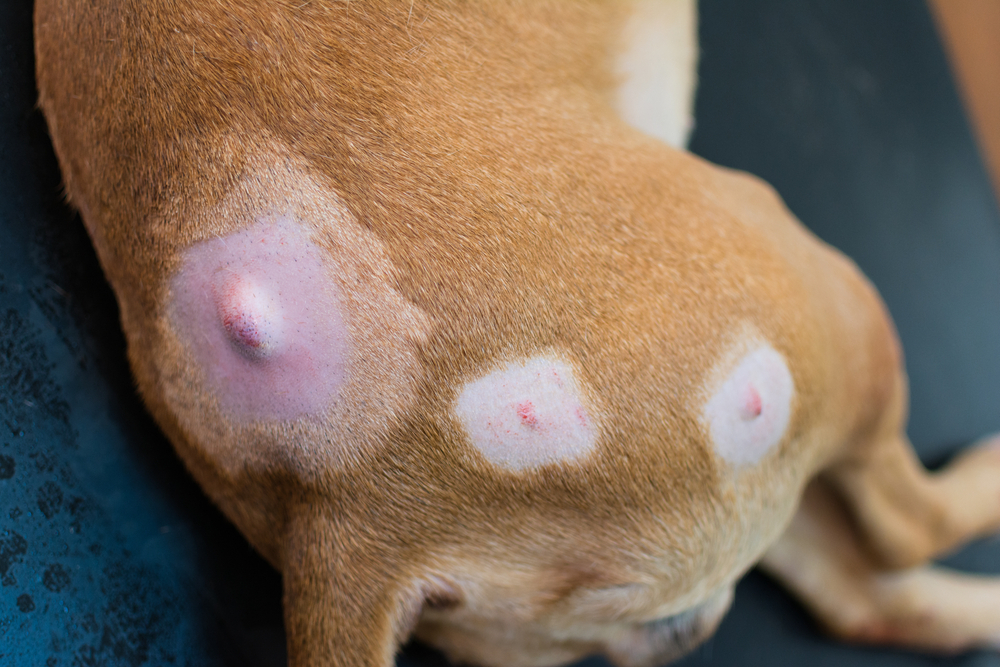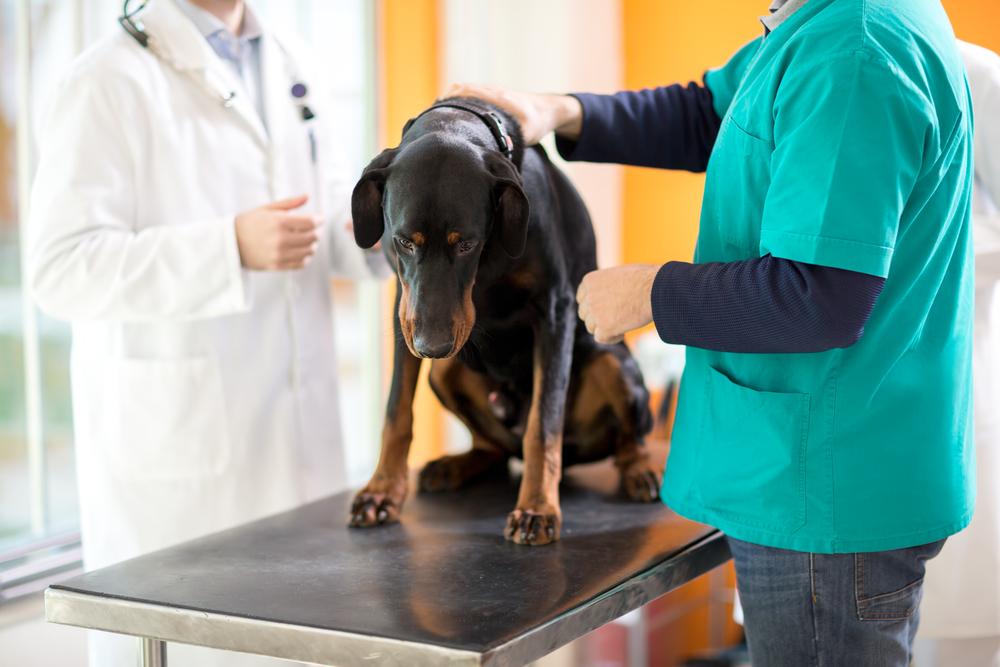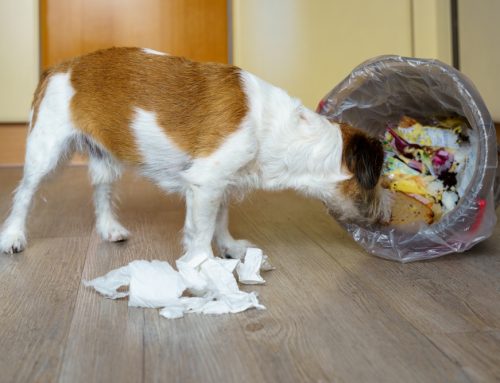Lumps and Bumps on Your Pet: When to Worry
It’s a moment every pet owner dreads: you’re petting your dog or cat, and suddenly your hand stops on something new—a lump, a bump, or a strange swelling you hadn’t noticed before. Your heart skips a beat. Is it serious? Should you call the vet immediately?
At Stanton Pet Hospital, we know how concerning this experience can be. Lumps and bumps in pets are common, but they’re not all created equal. Some are harmless, while others may require swift medical attention. Knowing what to look for—and when to act—can make all the difference in your pet’s health and comfort.
What Are Lumps and Bumps in Pets?
“Lump” is a broad term that refers to any abnormal swelling or mass on your pet’s body. These may appear on the surface of the skin or develop beneath it, and they can vary widely in texture, size, shape, and cause.
Some masses grow slowly and are benign, like fatty tumors or cysts. Others, such as malignant tumors or infected abscesses, may spread or cause discomfort. Because there’s no reliable way to distinguish between them without proper diagnostics, every new lump should be evaluated by a veterinarian.
Common Causes of Benign Lumps
Not every lump signals a crisis. Here are some non-cancerous causes we frequently diagnose:
- Lipomas: These fatty tumors are soft, movable, and generally harmless. Common in older dogs.
- Warts (Papillomas): Caused by a virus, often seen in younger dogs or immunocompromised pets.
- Skin Tags: Small, soft growths that typically pose no health risk.
- Calluses: Especially on elbows or joints—read more about dog elbow calluses.
Still, even benign lumps should be documented and monitored for changes.
When Is a Lump Cause for Concern?
Certain signs can indicate a lump may be more than just cosmetic. Contact your veterinarian promptly if you notice:
- Rapid growth or changes in shape, color, or texture
- Pain, heat, or sensitivity when touched
- Bleeding, discharge, or open sores
- Ulceration or crusting on the skin
- Systemic symptoms such as weight loss, vomiting, diarrhea, fatigue, or appetite changes
For more signs to watch for, check out AAHA’s cancer warning signs.
Emergencies: When to Act Immediately
Some mass-related symptoms may signal a medical emergency:
- Difficulty breathing or swallowing
- Sudden collapse or pale gums
- Extreme pain or swelling
- Multiple fast-appearing lumps
These may indicate an aggressive infection, trauma, or systemic illness. If your pet experiences any of these, seek emergency veterinary care right away.
How to Check Your Pet at Home
Routine at-home exams can help you catch changes early. Here’s how to perform a simple monthly check:
- Use your hands to gently examine your pet from head to tail.
- Focus on the neck, armpits, belly, legs, and tail—areas where masses can develop unnoticed.
- Take notes on size, location, firmness, and whether the lump moves under the skin.
- Photograph it for comparison over time.
Learn more from the Humane Society’s home exam tips.
What Happens During a Vet Visit?
At Stanton Pet Hospital, we begin with a thorough physical exam and a detailed history:
- When did you first notice the lump?
- Has it changed in size or shape?
- Is your pet behaving differently—eating less, sleeping more, or limping?
Diagnostic Tools We May Use
Depending on what we find, we may recommend one or more diagnostic procedures:
- Fine Needle Aspiration (FNA)
A simple, minimally invasive test where we collect cells from the lump using a small needle. Learn more about FNA here. - Cytology or Biopsy
We analyze the cells under a microscope to determine the type of tissue. This guide to skin cytology explains how we evaluate masses. - Imaging
In cases of deep or complex lumps, X-rays, ultrasound, or CT scans help assess the extent and whether internal organs are affected.
Treatment Options: Tailored to the Diagnosis
Once we have a clear picture of what we’re dealing with, we’ll recommend a treatment plan that best suits your pet’s needs:
- Monitoring: Some benign lumps may only require routine observation.
- Medication: Antibiotics for infected lumps or anti-inflammatories for painful swellings.
- Surgical Removal: Often the best course for fast-growing, bothersome, or potentially cancerous masses.
- Cancer Therapy: For malignant tumors, options may include surgery, chemotherapy, or radiation. Learn about different types of pet cancer.
We’ll discuss all the risks and benefits with you before moving forward, so you can feel confident in your pet’s care plan.
How Lumps Affect Daily Life
Even benign lumps can impact your pet’s comfort or mobility. You may need to:
- Adjust play or walk routines
- Use ramps for pets with joint masses
- Provide soft bedding to avoid irritation
- Monitor for licking or chewing, which can cause secondary infections
Emotionally, we understand the toll these changes can take. Waiting for test results or facing surgery decisions can be overwhelming. Please know—you’re not in this alone. The Veterinary Cancer Society offers excellent support for pet owners going through this process.
Frequently Asked Questions
Is every lump cancerous?
No—many are benign. Still, only a veterinary exam can confirm.
Can I treat a lump at home?
Not safely. Always consult your vet before applying any treatment or ointment.
Will my pet be in pain?
We prioritize pain management in every treatment plan. Many pets experience little to no discomfort during or after procedures.
How much will it cost?
Costs vary based on diagnostics and treatment. We’ll provide estimates and walk you through each step.
Can a lump come back after removal?
Yes, recurrence can happen. We’ll advise on post-surgical monitoring and preventive care.
Partnering in Your Pet’s Health
If you’ve discovered a new lump on your dog or cat, the best course of action is to have it professionally evaluated. Early detection can lead to easier treatment and better outcomes.
Reach out to us today to schedule an appointment or contact us with your concerns. You can also meet our compassionate care team and see why so many local pet families trust Stanton Pet Hospital for guidance and support.







Leave A Comment